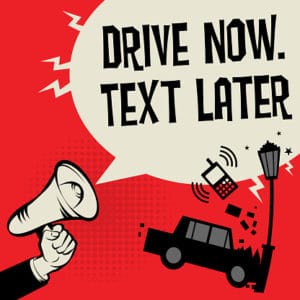-
Connect With Your Ottawa IT Service Company at (613) 828-1384
Connect With Your Ottawa IT Service Company at (613) 828-1384
 Driving a passenger vehicle is both a privilege and a responsibility. Ontario is enacting legislation that increases the cost of carelessness in hopes of also increasing safer driving practices.
Driving a passenger vehicle is both a privilege and a responsibility. Ontario is enacting legislation that increases the cost of carelessness in hopes of also increasing safer driving practices.
To a teenager eagerly awaiting their turn with the car keys, driving symbolizes freedom. No longer bound by a chauffeur chaperone, the driver’s seat is an open invitation to opportunity. The heady responsibility weighing on the driver isn’t as seductive as finding your favorite song to play (loudly) on the radio or digital music player, but it’s still there. Airbags, seat belts, blinkers, and anti-lock braking systems don’t sound as appealing as the wind in your hair and tunes blasting from the speakers.
When a teenager leaves the house, a parent’s worst fear is that something bad will happen to them. We worry nonstop and hope we’ve laid the foundation for responsible driving. We teach young drivers every safety rule and guide them on how to handle situations, from mundane incidents to outright emergencies. We then hope for the best, and that new drivers will make wise decisions on the road. It’s not always easy with the multitude of distractions available today.
Mobile phones were initially bulky and heavy but became smaller and sleeker over time. The Palm Pilot, widely used in the late 1990’s, and even BlackBerry models in the early 2000’s seem unwieldy compared to 2017’s iPhone 8. Smartphone adoption exploded around the 2007 launch of Apple’s first generation iPhone.
Cell phones were designed to connect to the nearest public telephone network and were not capable of sending text or SMS messages. Early adoption of these phones was popular in areas prone to harsher climates, like prolonged winters, or locales with long stretches of less-traveled roads.
More cars than ever are on the roads, and by default, more drivers (Google has yet to replace every car with a self-driving model!) Smartphones offer the ease of sending multi-media messages, email, video, and much more, but commonly through the use of touchscreens. While some newer cars include hands-free communication connectivity, this is still a high-end feature for most automobile manufacturers. Driving and touchscreens is a horrifying combination for parents of new drivers!
It’s interesting that this combination isn’t restricted to new drivers – “adults” know better, too, and yet there are so many that are “old enough to know better” and still have lapses in judgment. In cases like this, we end up needing protection from our own worst enemies: ourselves.
What will it take for all of us – new drivers and experienced drivers – to put down the phone and focus? For drivers in Toronto, for example, Ontario responded with pretty hefty distracted driving rules.
The laws in Ontario
First, convictions under the distracted driving rules will result in the driver having his or her license suspended for up to five years. Licenses cannot be seized by the responding officer at the time of the violation.
Second, Transportation Minister Steven Del Duca revealed that on top of license suspension, drivers face a significant fine. Drivers who are caught disobeying rules will face fees ranging from $2,000 to $50,000 – and potential jail time.
Suspensions and fines increase on repeat offenses, up to two years’ suspension and $50,000 in fines, but should these violation punishments be harsher – and sooner?
Safety of motorists, cyclists, and pedestrians is the ultimate goal of stricter distracted driving laws, and a driver needs to choose the point at which a response is less important than those around them. We have created a digital culture, one in which information is immediately available, allowing us to communicate instantly. These distracted driving laws are intended to protect everyone sharing the road and promote a climate of caution.
Since the first version of the distracted driving laws took effect in 2009, documented violations as a result of distracted driving have been shockingly overwhelming – even surpassing the instances of speeding violations or crashes involving drivers under the influence of drugs or alcohol.
For clarity, Ontario’s distracted driving laws are written with specific rules:
What is against the law?
Hand-held and mobile devices include:
GPS devices are the trickier part of the equation. A dashboard-mounted GPS device, or a dashboard mount for your smartphone on which you display a GPS application, like Google Maps or Waze, is the workaround for this.
Given that all of the above require the use of a battery, and thus a charging cable, it’s understandable that these regulations extend to the “plugging in” of these cables, as well.
The bottom line is, drivers are legally able to use devices that do not require touching or holding while engaged behind the wheel of a vehicle. If the said device requires touching, like to dial or scroll, this is a violation of the distracted driving law.
The sole exception to this law, in any circumstances, is the need to access emergency services, like police, fire or medical personnel.
Don’t let 2018 be the year you become an example of what not to do while driving – exercise caution, drive responsibly, and arrive at your destination safely while respecting the safety of those around you. Share the roads, and everyone wins!